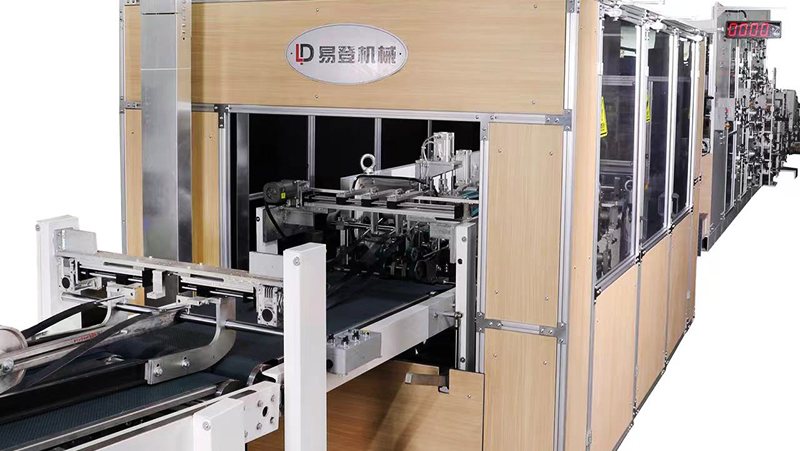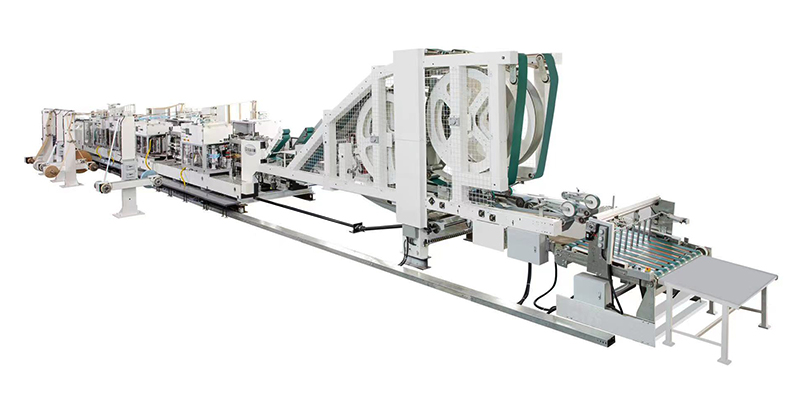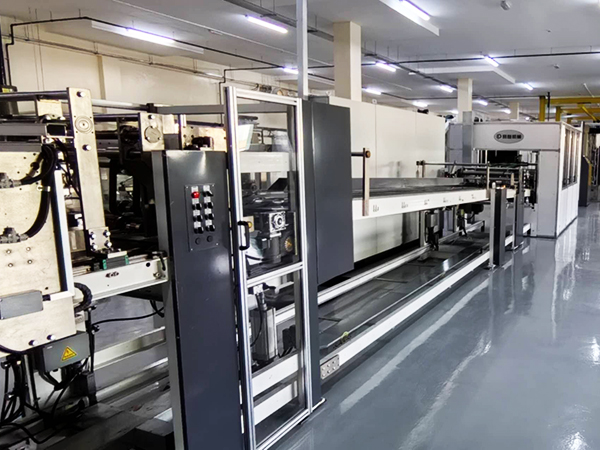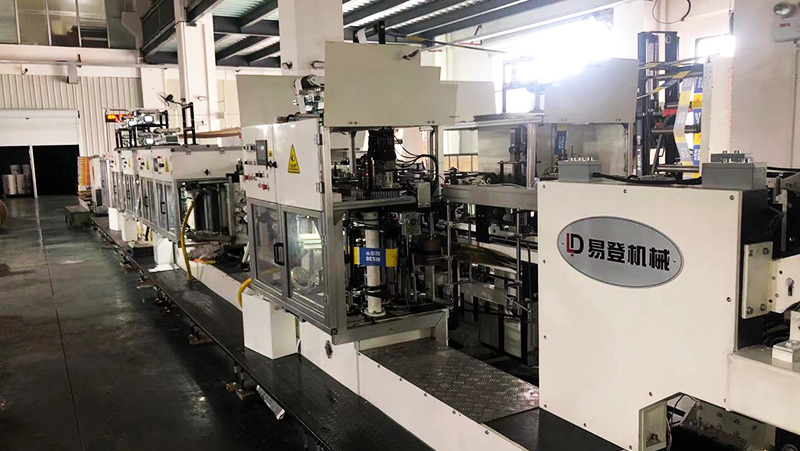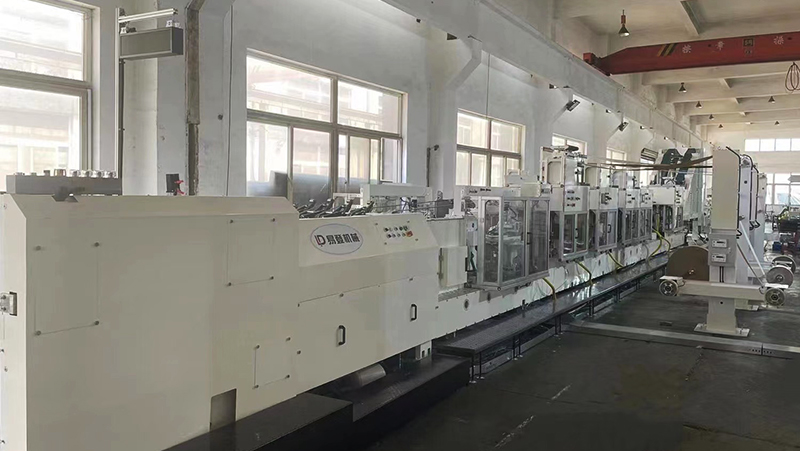The ubiquitous cement bag is a fundamental component of the global construction industry, safely containing and transporting the vital powder that builds our world. Behind every sturdy sack reliably protecting its contents from production line to jobsite lies a sophisticated and precisely engineered cement bag production line. These complex systems transform raw materials – primarily polypropylene (PP) or paper, combined with cement – into the uniform, durable bags demanded by manufacturers and builders alike. Understanding the intricacies of this process highlights the critical importance of investing in high-performance, reliable machinery.
The Core Components: A Symphony of Precision
A modern cement bag production line is not a single machine, but a seamlessly integrated sequence of specialized equipment working in concert. Here’s a breakdown of the key stages:
- Roll Stand & Pre-feeding: Large rolls of PP woven fabric or kraft paper form the raw material base. The roll stand ensures controlled, tensioned unwinding, feeding the material smoothly into the production stream. Advanced systems feature automatic splicing for continuous operation during roll changes.
- Printing Unit: Branding, product information, safety warnings, and batch details are printed onto the flat fabric or paper. High-resolution flexographic or rotary printing units ensure clear, smudge-resistant, and fast-drying ink application, crucial for both aesthetics and traceability.
- Bottom Folding & Pasting: This stage transforms the flat material into a tubular structure. The fabric edges are folded and precisely glued or thermally bonded to form the bottom seam of the future bag. The accuracy and strength of this seam are paramount for preventing leaks and ensuring bag integrity under load.
- Gusset Forming: For higher-capacity bags (like 50kg), gussets (side folds) are created to allow the bag to expand when filled and lie flat when empty. Special forming plates and folders consistently create these precise folds.
- Cross Cutting: The continuous tubular material is cut into individual bag lengths at high speed. Precision cutting mechanisms, often servo-driven for absolute accuracy, ensure each bag is the exact required dimension. Rotary knives or ultrasonic cutters deliver clean, sealed edges.
- Top Folding & Sewing/Sealing: The open top end of the cut bag is folded and sealed. This is typically achieved via:
- Sewing: Using high-speed industrial sewing machines with multiple needles for strength and redundancy. Thread tension control is critical.
- Heat Sealing (Valve Bags): For modern valve bags, a specialized valve is inserted, and the top is heat-sealed shut, leaving only the valve for filling. This requires precise temperature control.
- Pasting: For some paper bag types, the top may be folded and glued.
- Valve Application (For Valve Bags): In lines producing valve bags, a separate unit precisely attaches the filling valve (usually made of paper/plastic composite) to the bottom or side of the bag during the forming process. Valve placement and bonding integrity are crucial for dust-free filling.
- Conveying & Stacking/Bundling: Finished bags are transported via conveyors, often inspected automatically or manually for defects. Finally, stackers or bundlers count and arrange the bags into neat, uniform stacks or bundles (e.g., 10 or 20 bags) suitable for palletizing, strapping, and shipment.
Why Performance Matters: Beyond Just Making Bags
The efficiency, reliability, and output quality of a cement bag production line directly impact a manufacturer's bottom line and market reputation:
- High Speed & Output: Modern lines must operate at speeds of 60-120+ bags per minute to meet large-scale cement plant demands. Downtime is incredibly costly.
- Consistent Quality & Strength: Every bag must reliably hold 25kg, 50kg, or more without bursting during filling, handling, stacking, or transport. Consistent seam strength, print quality, and dimensional accuracy are non-negotiable.
- Minimal Waste: Precise control systems (cutting, folding, pasting) minimize material waste (film/paper, ink, adhesive, thread). Efficient operation reduces energy waste.
- Operational Flexibility: Lines need to handle different bag sizes (25kg, 40kg, 50kg), types (sewn mouth, pasted valve, heat-sealed valve), and potentially different materials (PP, paper) with quick changeovers.
- Durability & Low Maintenance: Cement plants are demanding environments. Machinery must be robust, built from high-quality materials, and designed for easy access and maintenance to maximize uptime.
- Operator Safety & Ease of Use: Intuitive controls, safety guarding, and ergonomic design protect operators and simplify training and operation.
Yideng Machinery: Engineering Excellence for Your Bagging Success
At Yideng Machinery, we understand that your cement bag production line is the backbone of your packaging operation. It's not just about making bags; it's about ensuring a smooth, efficient, and profitable flow of your core product to market. This deep understanding drives our commitment to engineering and manufacturing machinery that sets the benchmark for performance and reliability.
- Uncompromising Precision & Speed: Our lines incorporate advanced servo-motor technology and precision engineering for exceptional speed control, registration accuracy (printing, cutting, folding), and consistent, high-strength bag construction. We maximize your output potential.
- Robust Construction for Demanding Environments: Built with heavy-duty materials and components designed for the rigors of cement plant operations, Yideng machines deliver exceptional longevity and withstand continuous high-volume production.
- Designed for Efficiency & Uptime: We prioritize designs that minimize waste (material, energy) and facilitate rapid, tool-less changeovers. Easy access points and modular design simplify maintenance, keeping your line running and your costs down.
- Intelligent Control Systems: User-friendly PLC/HMI interfaces provide operators with clear visibility and control over the entire process. Advanced diagnostics aid in troubleshooting, ensuring peak performance.
- Focus on Quality Output: From precise printing registration to consistently strong seams (sewn, pasted, or heat-sealed) and accurate valve placement, our machines are engineered to produce cement bags that meet the highest quality standards, protecting your product and your brand.
- Customizable Solutions: We recognize that one size doesn't fit all. Yideng works closely with clients to configure lines that meet specific production requirements, bag types, and throughput targets.
Investing in Your Future
Choosing the right cement bag production line is a strategic investment. Opting for proven, high-performance machinery from a dedicated manufacturer like Yideng Machinery translates directly into:
- Increased Productivity: Higher output rates and reduced downtime mean more bags produced per shift.
- Lower Operating Costs: Reduced waste, lower energy consumption, and minimized maintenance expenses.
- Enhanced Product Quality & Brand Image: Consistently reliable, professionally printed bags build customer trust.
- Improved Operational Reliability: Dependable machinery minimizes production disruptions and stress.
- Long-Term Value: Durable construction ensures a superior return on investment over the lifespan of the equipment.
The cement bag production line is a marvel of modern industrial engineering, transforming raw materials into the essential packaging that safely delivers cement worldwide. Its performance is critical to the efficiency and profitability of any cement manufacturer. Partnering with an experienced and dedicated machinery provider like Yideng Machinery ensures access to technology engineered for precision, speed, durability, and efficiency. By investing in a high-quality Yideng production line, cement producers secure not just machinery, but a reliable foundation for consistent output, superior bag quality, and sustained operational success in a competitive global market. Let Yideng Machinery be your trusted partner in building the future of your cement packaging operations.


